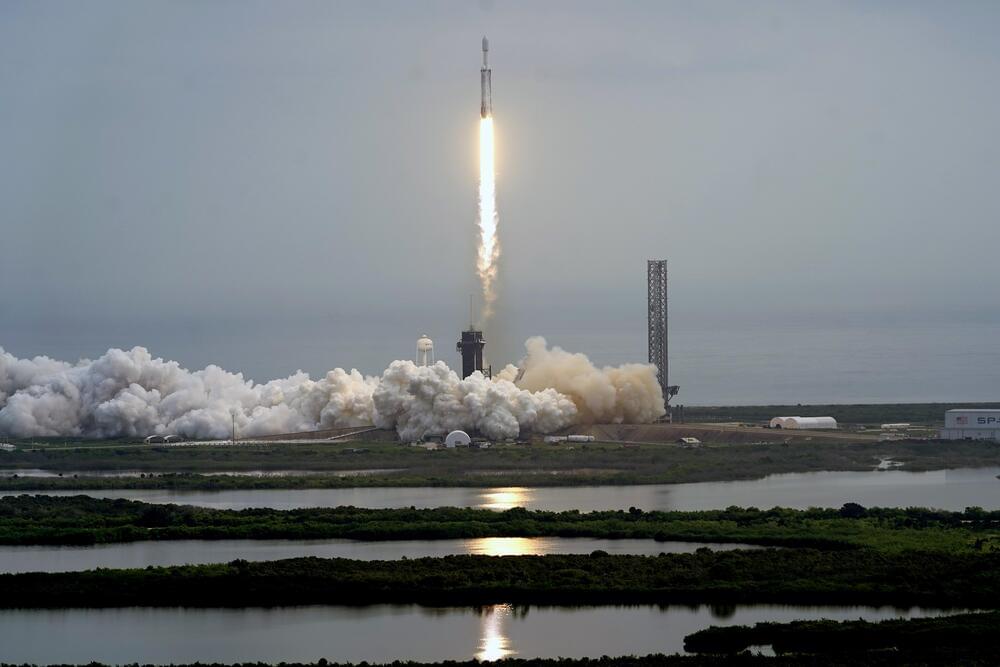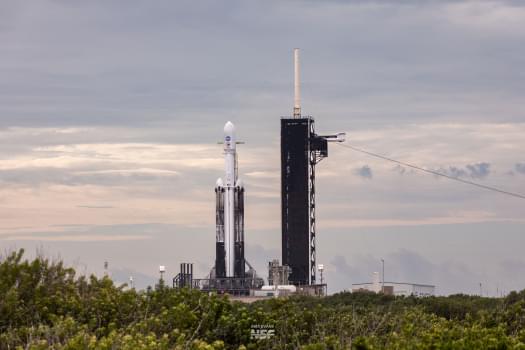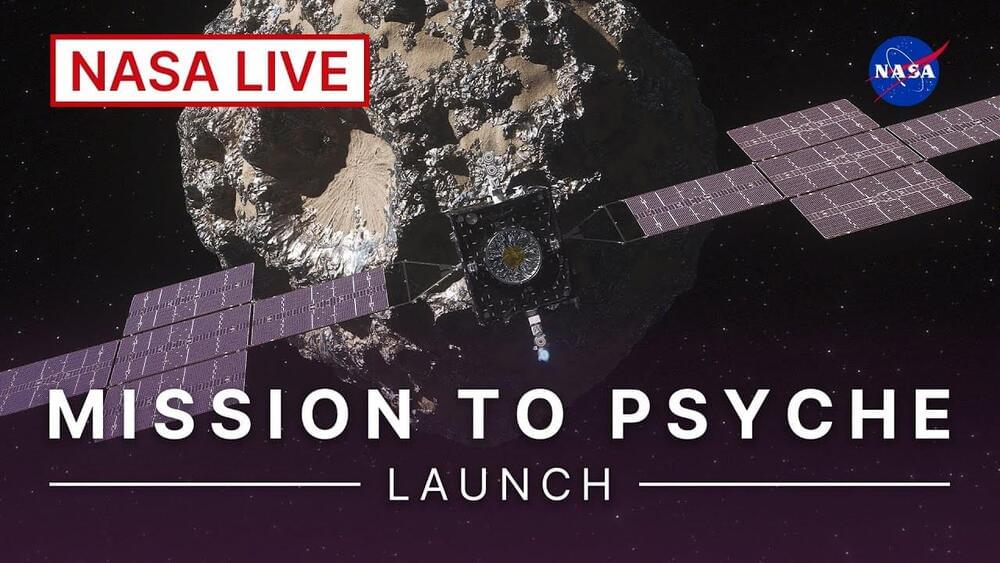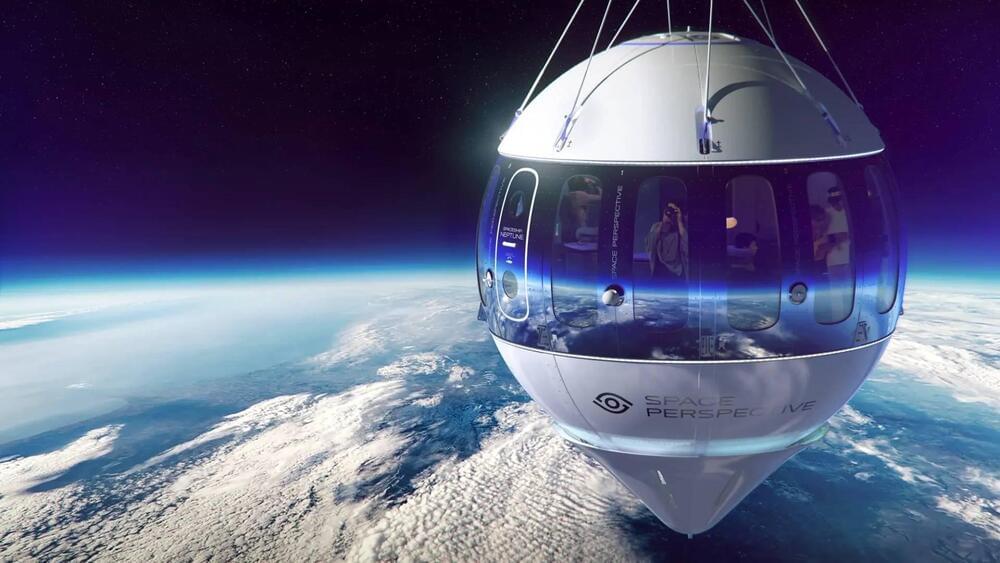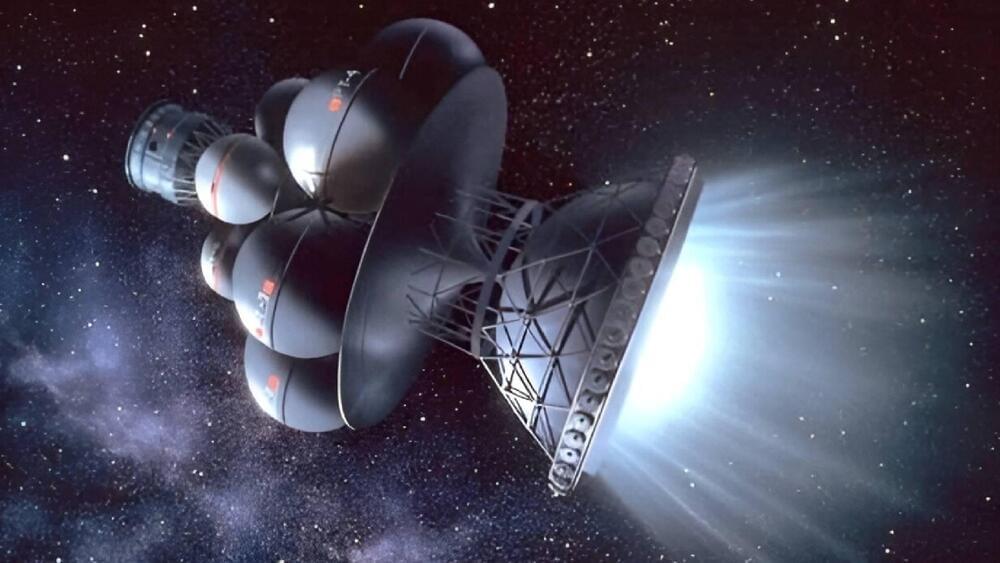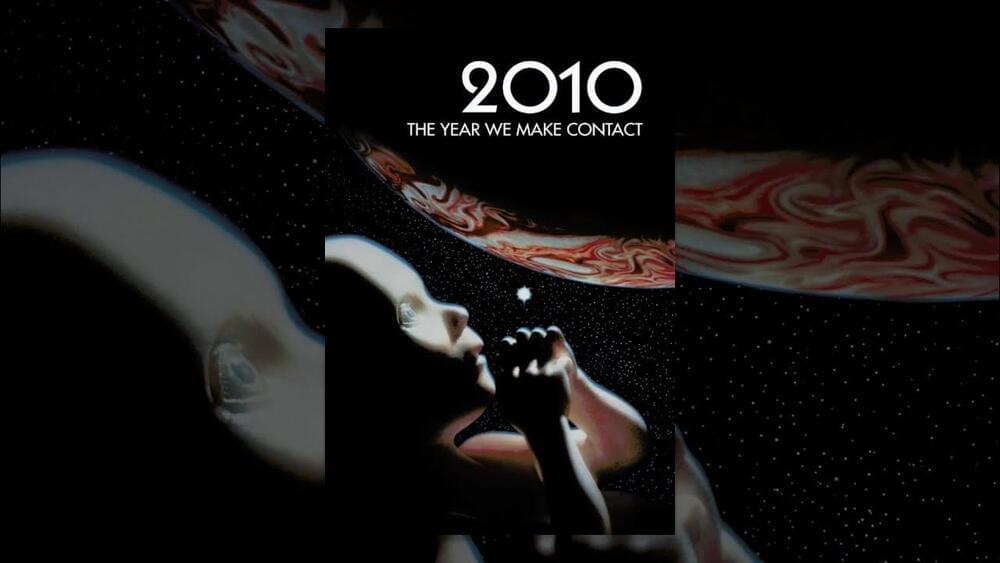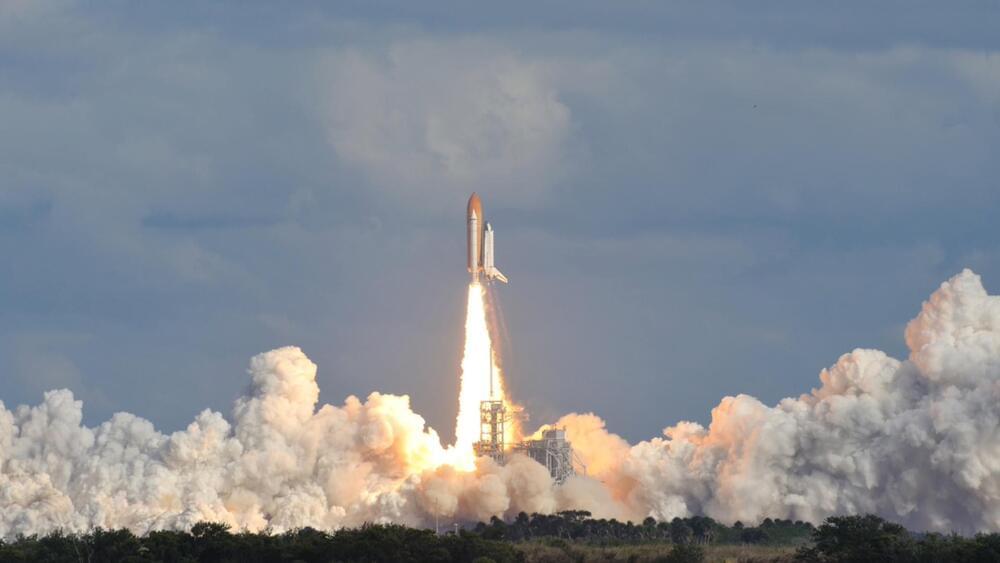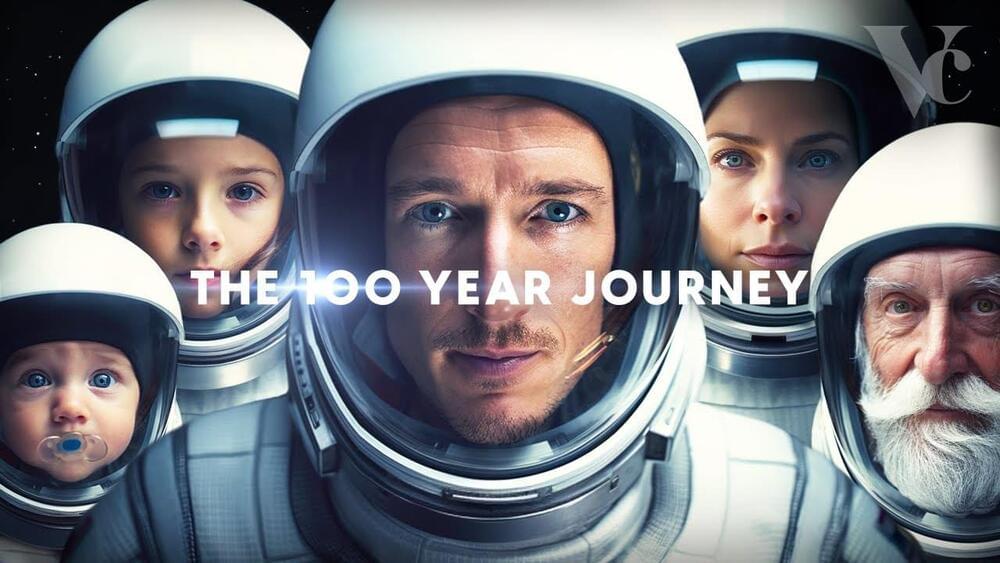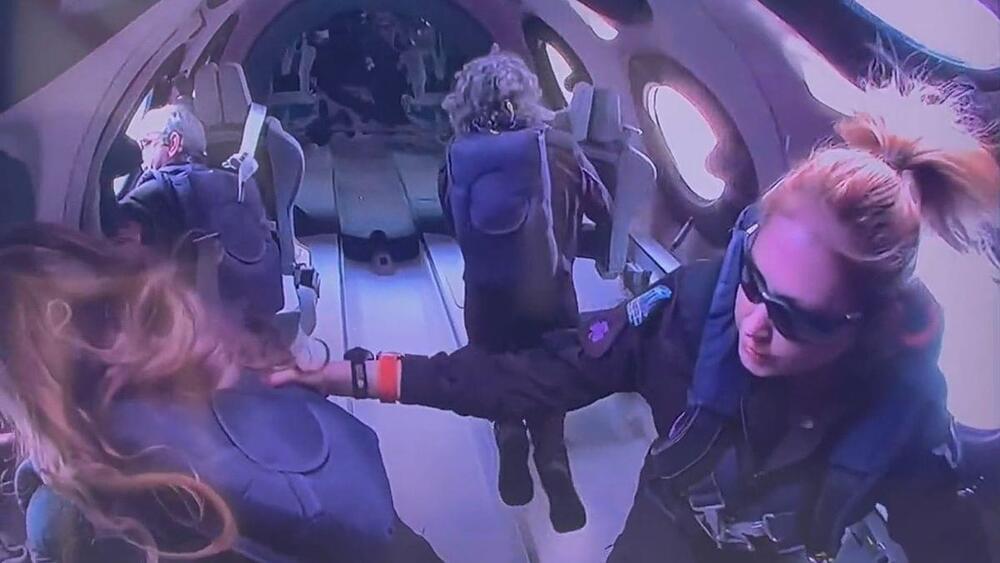A NASA spacecraft has rocketed away on a six-year journey to a rare asteroid made of metal. SpaceX launched the Psyche spacecraft on Friday from the Kennedy Space Center in Florida.
Category: space travel – Page 72
NASA and SpaceX teams are set to launch the agency’s Psyche mission to metallic asteroid 16 Psyche from Florida on Friday, Oct. 13. Psyche will launch atop a SpaceX Falcon Heavy rocket from Launch Complex 39A (LC-39A) at the Kennedy Space Center in Cape Canaveral, Florida. Launch is currently scheduled for 10:19 AM EDT (14:19 UTC). Current weather forecasts from the 45th Weather Squadron predict a 40% chance for favorable weather at liftoff. Should the launch be scrubbed due to weather, backup launch opportunities are available throughout the following days. Psyche’s launch window lasts from Oct. 5 to Oct. 25.
Psyche will be the first mission to ever visit and extensively study a metallic asteroid. 16 Psyche is thought to have once been the core of forming planetesimal back when the solar system was first forming. If this prediction is true, 16 Psyche could provide planetary scientists with incredible amounts of information and insight into how planets form and what the cores of planets like Earth, Mars, and Mercury look like.
Watch the Psyche spacecraft launch from NASA’s Kennedy Space Center in Florida on a SpaceX Falcon Heavy rocket. NASA and SpaceX are now targeting launch at 1…
Mercedes-Maybach has joined forces with Space Perspective, the world’s first carbon-neutral spaceflight experience company, to offer customers an emissions-free luxurious ride into 100,000 feet into space for those wishing for a space experience like no other. Rides to the spaceship are provided by Mercedes-Maybach electric vehicles.
Sustainable, accessible and safe
The firms describe the craft used for these travels called Spaceship Neptune as “the most accessible, most sustainable, and safest spacecraft on or above Planet Earth. It comprises of the SpaceBalloon, Reserve Descent System and Neptune Capsule.”
These systems are based on nuclear fusion.
How do we get beyond our solar system? Current technologies simply can’t support this type of travel. However, speaking to Universe Today.
Shigemi Numazawa/ Project Daedalus.
Fusion propulsion systems.
2010: The Year We Make Contact
Posted in computing, space travel
In the year 2001, the spaceship Discovery is betrayed by its on-board computer, HAL, while on a mission to Jupiter. Nine years later, with the United States and Russia on the brink of war, the superpowers launch a joint mission to return to the Discovery in 2010: The Year We Make Contact. During the three-year voyage to Jupiter, world war breaks out on Earth, threatening to extend to the spaceship. But the ghostly presence of Dave Bowman (Keir Dullea) of the Discovery crew intervenes, warning that something grand, dangerous and wonderful is about to occur…
JAXA and Mitsubishi Heavy Industries (MHI) have joined forces to design and develop the new launcher.
The reusable rockets are poised to be a game-changer technology in the modern era of space exploration. Elon Musk’s SpaceX took the lead in showcasing the effectiveness of reusable rockets, thus establishing a model for other companies and space agencies to follow in advancing this technology.
Now, Japan is working towards incorporating this technology into its future space transportation programs.
Japrz/iStock.
This is a sci-fi documentary, looking at the 100 years it will take a nuclear fusion spacecraft to travel to Proxima Centauri b. The closest habitable planet to Earth, with a distance of 4.24 light years.
A journey venturing far beyond Earth’s solar system, showing the future science of space travel, exploration, and future space technology.
Personal inspiration in creating this video comes from: the movie Interstellar, The Expanse TV show, and Carl Sagan’s Cosmos TV show.
Other topics in the video include: the population growth over the 100 year timelapse journey to Proxima Centauri b, how bacteria evolves in a closed loop system, the design of the spaceship habitat ring, the rotations per minute needed to generate 1-g of artificial gravity, the conservation of angular momentum in space, the living conditions on Proxima Centauri b (the higher gravity, and the red light), and time dilation is explained (how many extra days will pass on Earth when the spaceship arrives at the destination planet – just like the movie Interstellar).
Today’s milestone comes less than two months after Virgin Galactic launched the first former Olympian and the first mother-daughter duo to the final frontier on its Galactic 2 flight. The daughter in that duo, 18-year-old Anastatia Mayers, also became the youngest-ever spaceflyer during that mission.
Related: Meet the crew of Virgin Galactic’s ‘Galactic 04’ mission
Galactic 4 began at 11:28 a.m. EDT (1528 GMT) this morning, when Virgin Galactic’s VSS Unity space plane lifted off beneath the wings of its carrier craft, known as VMS Eve.
NASA will begin a new RS-25 test series Oct. 5, the final round of certification testing ahead of production of an updated set of the engines for the SLS (Space Launch System) rocket. The engines will help power future Artemis missions to the Moon and beyond.
A series of 12 tests stretching into 2024 is scheduled to occur on the Fred Haise Test Stand at NASA’s Stennis Space Center near Bay St. Louis, Mississippi. The tests are a key step for lead SLS engines contractor Aerojet Rocketdyne, an L3Harris Technologies company, to produce engines that will help power the SLS rocket, beginning with Artemis V.
“NASA and our industry partners continue to make steady progress toward restarting production of the RS-25 engines for the first time since the space shuttle era as we prepare for our more ambitious missions to deep space under Artemis with the SLS rocket,” said Johnny Heflin, liquid engines manager for SLS at NASA’s Marshall Space Flight Center in Huntsville, Alabama. “The upcoming fall test series builds off previous hot fire testing already conducted at NASA Stennis to help certify a new design that will make this storied spaceflight engine even more powerful.”
